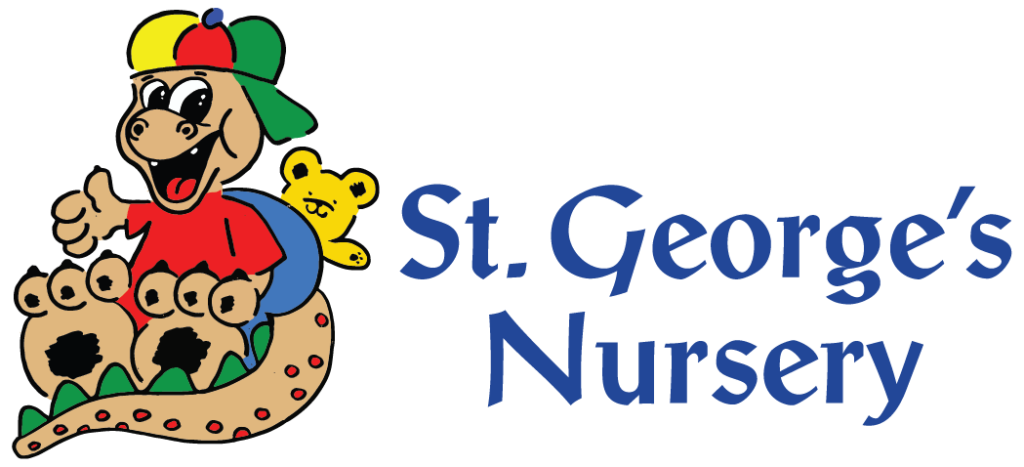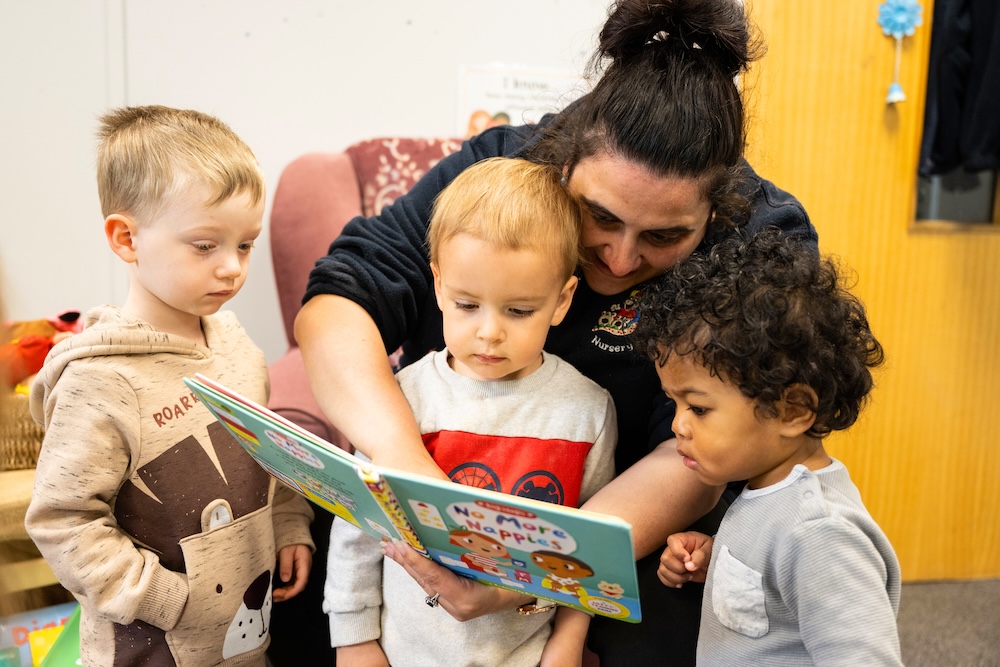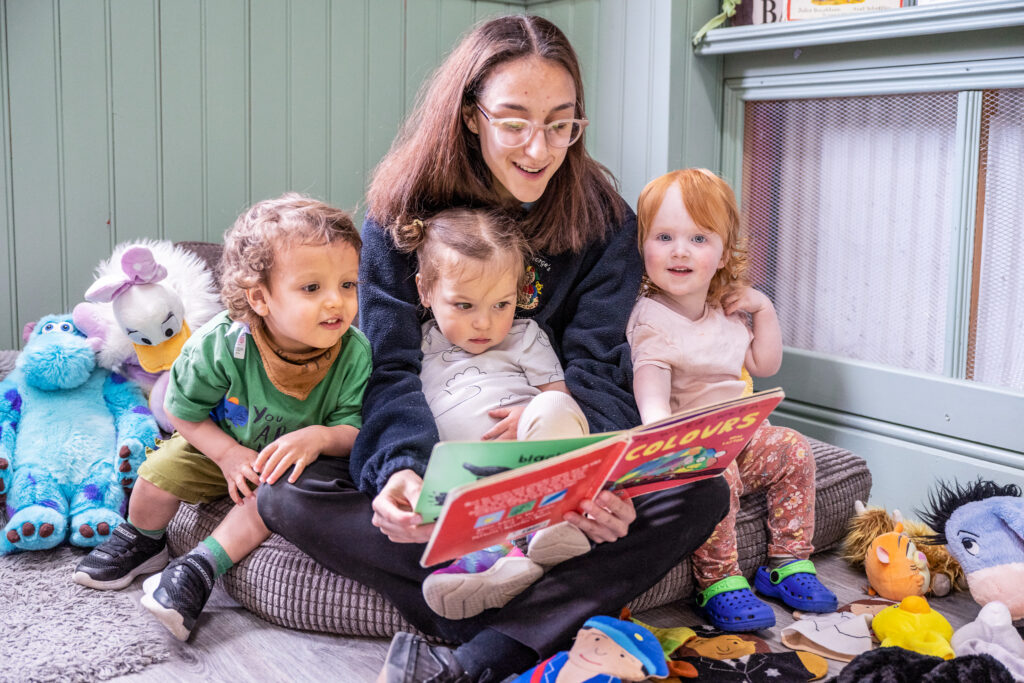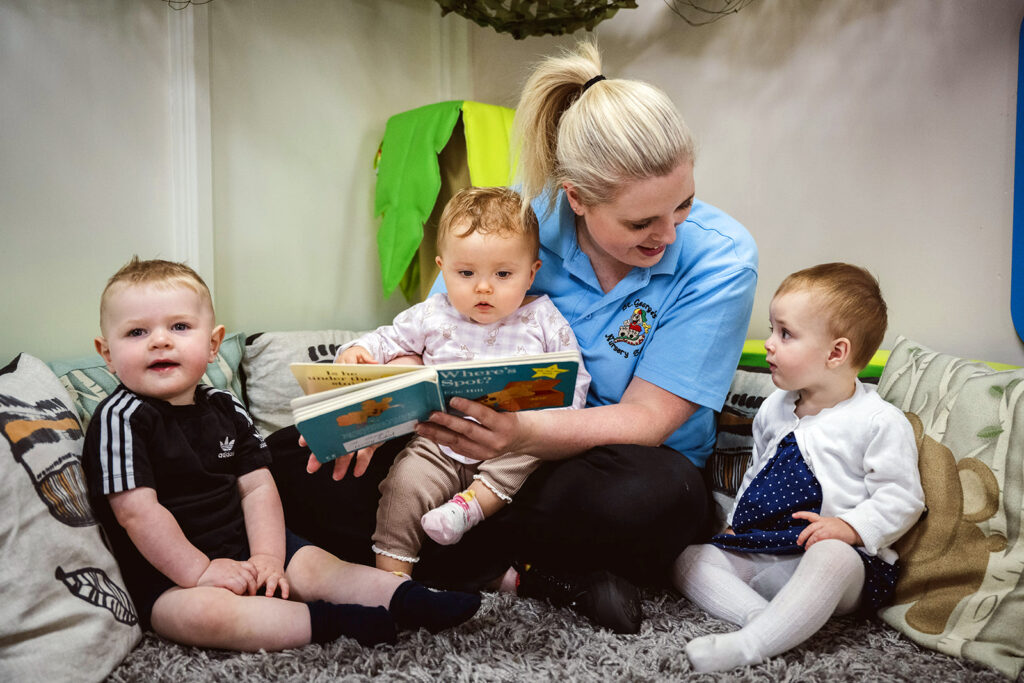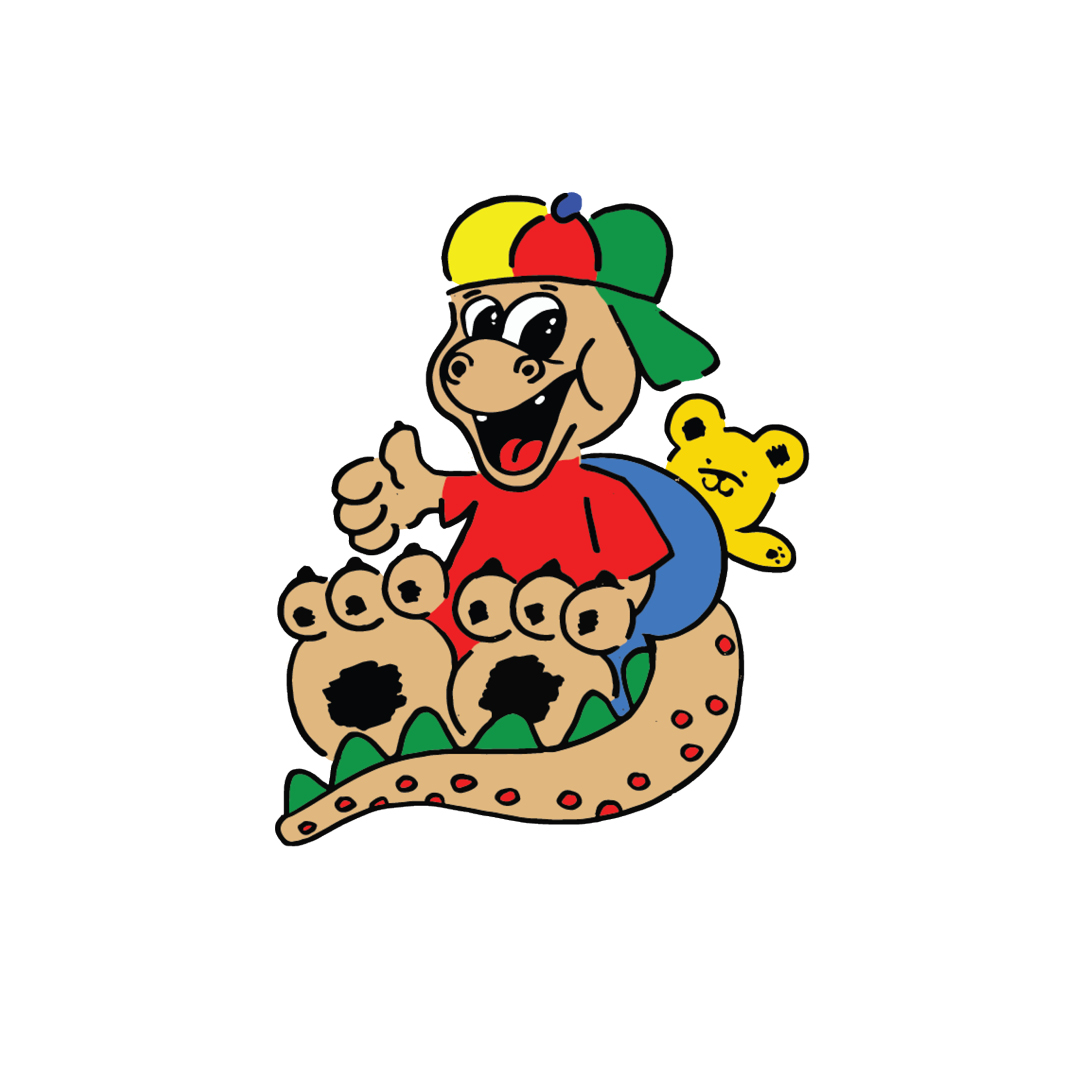A guide to understanding and managing speech and language delays in babies & toddlers
“One in five primary and secondary aged children are estimated to be behind with their talking and understanding of words”, a new survey by a charity suggests.
Speech and Language UK says “this is the highest number of children with speech and language challenges ever recorded.” – Sky News.
During the journey of childhood development, the ability to communicate effectively serves as a foundation for social interaction, learning, and emotional expression. However, for some children, this journey may encounter hurdles due to speech and language delays. As a childcare provider, it is our duty to understand the challenges your child faces and take proactive steps to make a significant difference in their progress.
Here are a few of the approaches that we use at St. George’s Nursery to support your child and work to enhance their speech and language abilities:
Utilising Objects of Interest:
To initiate conversations, we use objects that capture children’s interests. These objects serve as conversation starters, encouraging children to engage in verbal exchanges.
Incorporating Music and Rhymes:
We include singing, nursery rhymes, and songs into our daily activities. These rhythmic activities help with vocabulary, supporting speech and language development.
Engaging in Role-Playing Activities:
Through role-playing activities like teddy bear picnics or shopping scenarios, we encourage expressive language and social interaction.
Encouraging Communication During Play:
We use every opportunity during playtime to expand children’s communication skills. Whether it’s through acting out scenarios or playing games.
Early Talk Boost Activities:
Early Talk Boost is a targeted program for 3–4-year-olds needing language support to catch up with other children. It aims to boost language skills by 6 months in 9 weeks. Sessions occur three times weekly during circle/story time, lasting 15-20 minutes. Led by early years practitioners, activities focus on speech, language, and communication fundamentals, including learning new words and engaging in conversations. We offer early boost activities focused on identifying objects, describing them, and reading stories in small groups and taking them home to read with parents.
One-on-One Language Opportunities:
Whenever possible, we engage children in one-on-one interactions. This personalised approach allows us to cater to each child’s specific needs and encourage communication development.
Modelling Language
Our staff models clear and precise language by speaking slowly and expressing words accurately.
These steps represent just a fraction of the comprehensive support we provide to assist your child in overcoming their speech and language challenges.
As nursery practitioners, it’s crucial to understand the significance of early detection and intervention when it comes to speech and language delays. Working hand in hand with parents is paramount in this process. Collaborating with parents allows for a comprehensive understanding of the child’s developmental journey and facilitates the identification of any potential delays.

Identifying speech and language delays in young children requires careful observation and awareness of developmental milestones.
As parents, here are some indicators that may help you identify potential issues with your child’s speech and language development.
Limited Vocabulary:
As children approach their first birthday, they usually start saying simple words like “mama,” “dada,” or other basic nouns. A delay may be evident if a child has a very limited vocabulary.
Difficulty Understanding Directions:
A child should be able to understand and follow simple instructions appropriate for their age, such as “wave bye-bye” or “bring me the ball.” Difficulty following directions may suggest a language comprehension delay.
Lack of Social Interaction:
Children with speech and language delays may have trouble engaging in conversations, maintaining eye contact, or responding appropriately socially.
Family History:
Children with a family history of speech and language delays, developmental disorders, or hearing impairments may be at a higher risk for similar challenges and should be monitored closely.
Lack of Imitation:
Children typically imitate sounds, words, and gestures they hear from others. A lack of imitation or delayed imitation skills might indicate a delay in speech and language development.
Persistent Stuttering:
While stuttering is common in young children as they develop language skills, persistent stuttering that continues beyond the preschool years could be a sign of a speech disorder.
Early identification and intervention can significantly improve outcomes for children with speech and language issues, so don’t hesitate to seek professional guidance if you have concerns about your child’s communication development.
While speech and language delays may present obstacles along the path of childhood development, with patience, support, and proactive steps, children can overcome these challenges and flourish in their communication skills. As educators, along with your support, our commitment to nurturing your child’s communication abilities can make a profound difference in their journey towards expressive and meaningful communication.
Remember, every small step forward is an achievement to laying the foundation for a brighter future for your little one.
Follow us @StGeorgesNursery to learn more about our nurseries.
